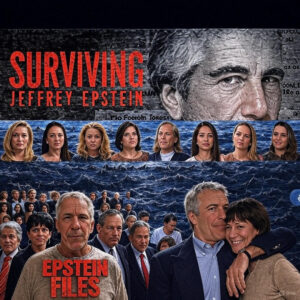
The first scene drops like a bomb: a whistleblower’s trembling hands, a hidden recording, a name everyone knows. Within hours of release, the world isn’t just watching — it’s reeling. Netflix’s newest documentary doesn’t dramatize fiction; it exposes what powerful people fought to bury. Threats. Cover-ups. A trail of silenced voices finally breaking through. This isn’t entertainment — it’s evidence, edited for the world to see. And now, the question isn’t who’s guilty. It’s how deep the truth goes, and how far Netflix will dare to follow it.
Each frame burns with urgency. Every interview feels like testimony. The editing isn’t polished to please — it’s cut to confront. The camera doesn’t flinch from pain; it documents it, raw and unfiltered. What unfolds isn’t just a story of corruption or betrayal, but a revelation of how silence becomes an industry — funded, managed, and enforced. The series makes one thing unmistakably clear: the truth wasn’t lost. It was buried on purpose.
In a landscape where scandal often becomes spectacle, this documentary redefines exposure. It’s not designed to go viral; it’s designed to hold power accountable. Hidden files emerge. Conversations once erased are replayed. Patterns connect names across boardrooms, studios, and governments. The viewer becomes part of the investigation — a witness to the anatomy of systemic deceit. By the midpoint, it’s no longer a documentary; it’s a reckoning.
And the fallout is immediate. Newsrooms scramble. Lawyers threaten. Social media turns into a digital courtroom where public opinion is the verdict. Yet amid the noise, one truth cuts through: this is what happens when silence breaks — and the whole world hears the echo. Netflix, once accused of feeding passive audiences, has now done the opposite. It has forced passivity into participation.
The danger of this release isn’t just what it reveals; it’s what it demands. It asks uncomfortable questions: Who looked away? Who profited from silence? And when does ignorance become complicity? As viewers, we’re no longer distant consumers of controversy — we’re part of its consequences. The series holds up a mirror, and the reflection isn’t flattering.
What began as an investigation now feels like the first chapter of a global accountability movement. The people once dismissed as “accusers” are finally named as witnesses. The institutions that thrived on secrecy now face exposure at a scale they can’t control. For every powerful figure hoping the story would fade, Netflix has ensured it won’t.
When the credits finally roll, there’s no applause — just quiet disbelief. Because this isn’t a series that ends. It lingers. It questions. It reminds us that in an era of streaming, truth travels faster than denial.
Netflix’s most dangerous story isn’t about scandal — it’s about sight.
And once you’ve seen it, you can’t unsee it.
Leave a Reply